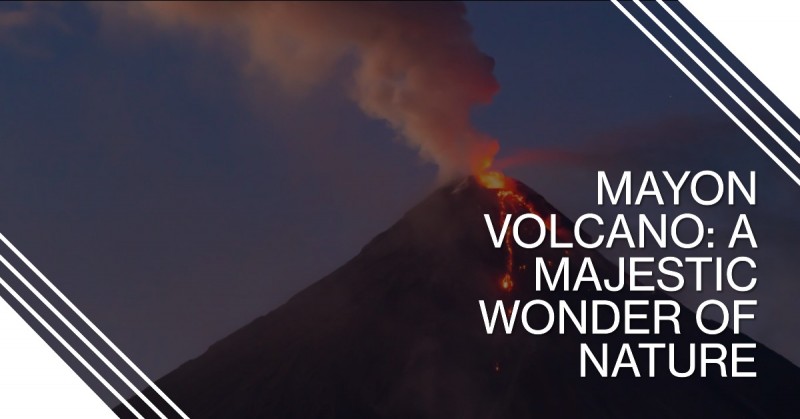
Welcome to the captivating world of Mayon Volcano, a natural marvel that stands tall in the beautiful landscapes of the Philippines. This article delves into the fascinating details of Mayon Volcano, providing you with an in-depth understanding of its history, geological significance, and its impact on the surrounding environment. Join us on this journey as we explore the awe-inspiring beauty and the geological marvel that is Mayon Volcano.
The Formation of Mayon Volcano
Mayon Volcano, located in the province of Albay in the Philippines, is a stratovolcano renowned for its near-perfect cone shape. It was formed through a series of volcanic activities over thousands of years. The volcano is a result of the subduction of the Philippine Sea Plate beneath the Philippine Mobile Belt, leading to the formation of magma chambers beneath the Earth's surface.
Geological Features
Mayon Volcano boasts remarkable geological features, such as its symmetrical cone shape, steep slopes, and a well-defined crater. The volcano rises approximately 2,462 meters above sea level and is surrounded by lush greenery, adding to its picturesque appeal. The slopes of Mayon Volcano are composed of layers of hardened lava, volcanic ash, and pyroclastic materials, which have accumulated over centuries.
Historical Eruptions
Over the centuries, Mayon Volcano has been an active volcano, experiencing numerous eruptions that have left a significant impact on the region. The recorded eruptions have varied in intensity, with some being relatively minor and others being highly explosive. Notable eruptions in recent history occurred in 1814, 1897, 1984, and 2006, resulting in the loss of lives and the displacement of communities.
Environmental Impact
While the eruptions of Mayon Volcano have caused destruction and displacement, they have also played a vital role in shaping the surrounding environment. Volcanic ash and lava deposits have enriched the soil, making it highly fertile for agriculture. The region surrounding Mayon Volcano is known for its abundant agricultural produce, including crops such as rice, vegetables, and fruits.
Mayon Volcano and Tourism
The majestic beauty of Mayon Volcano has made it a popular tourist destination in the Philippines. Visitors from around the world are captivated by its scenic views and the opportunity to witness an active volcano up close. Tourists can engage in various activities such as hiking, trekking, and photography tours to experience the grandeur of Mayon Volcano.
Ongoing Monitoring and Research
Given its active nature, Mayon Volcano is closely monitored by the Philippine Institute of Volcanology and Seismology (PHIVOLCS). Advanced monitoring systems, including seismometers, gas analyzers, and satellite imagery, allow scientists to study the volcano's behavior and provide early warning systems to ensure the safety of nearby communities.
Safety Measures and Precautions
Due to the potential hazards associated with volcanic activity, safety measures and precautions are in place for residents and visitors near Mayon Volcano. Evacuation plans, emergency shelters, and regular drills are conducted to prepare communities for potential eruptions. Additionally, restricted zones are established to prevent individuals from venturing into dangerous areas during periods of increased volcanic activity.
Local Legends and Cultural Significance
Mayon Volcano holds great cultural significance for the people of Albay and the surrounding regions. Local legends and folklore are intertwined with the volcano's history, with tales of love, tragedy, and resilience associated with its eruptions. Mayon Volcano has become a symbol of beauty and strength, representing the spirit of the people living in its shadow.
Mayon Volcano: A Natural Photographer's Paradise
The stunning landscapes and dramatic eruptions of Mayon Volcano make it a paradise for photographers. The symmetrical cone, lush vegetation, and the contrast between fiery eruptions and serene surroundings offer endless opportunities for capturing breathtaking images. Photographers from around the world flock to Mayon Volcano to document its beauty and share it with the rest of the world.
Conclusion
Mayon Volcano stands as a testament to the awe-inspiring power of nature. Its majestic beauty, geological significance, and cultural importance make it a cherished landmark in the Philippines. While it poses risks due to its active nature, Mayon Volcano continues to captivate the world with its breathtaking scenery and serve as a reminder of the fragile balance between human existence and the forces of nature.
Unleashing the Tech Revolution: Top Trending Technologies